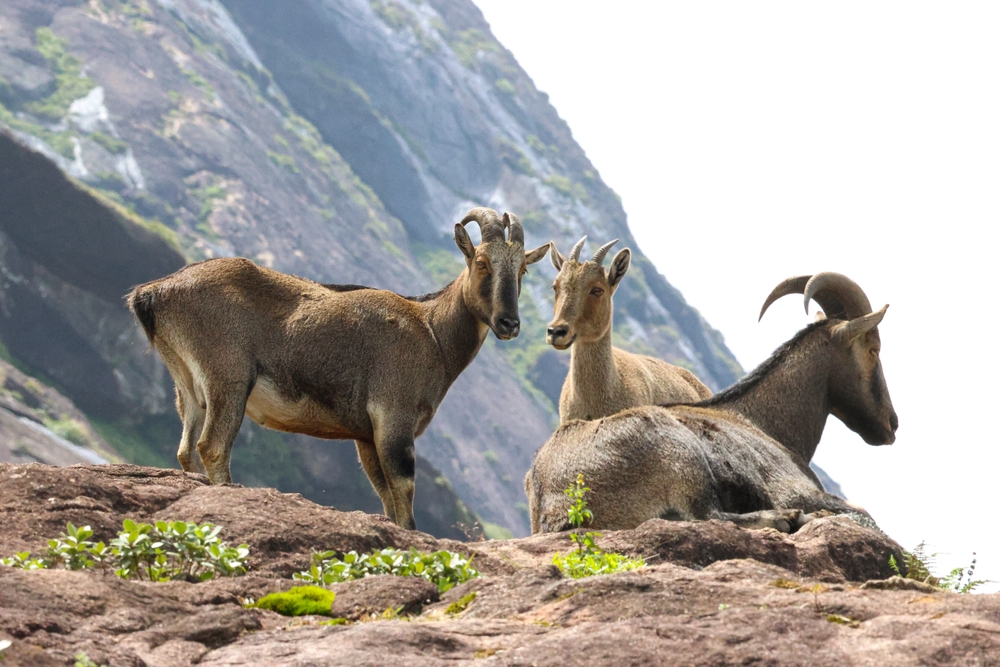Eravikulam Overview
Eravikulam National Park, locally known as Eravikulam Mala, is a breathtaking expanse located in the Western Ghats of Kerala, India. Spanning an area of approximately 37 square miles (97 square kilometers), the park is a jewel of biodiversity, showcasing the region’s unique ecological richness. Nestled near Munnar, one of Kerala’s most popular hill stations, the park is perched at an altitude ranging from 6,900 feet to over 7,000 feet (2,100 meters), offering a stunning blend of high-altitude grasslands and shola forests. It is a sanctuary for flora and fauna endemic to this mountainous terrain, with its rugged cliffs, rolling grasslands, and sparkling streams painting a picture of serene beauty. An iconic feature of the park is Anamudi, the highest peak in South India, which stands majestically at 8,842 feet (2,695 meters) and is a prime attraction for trekkers and nature enthusiasts.
The park’s landscape is dominated by undulating hills blanketed in emerald-green grasslands interspersed with dense patches of shola forests, a unique type of stunted tropical montane forest. During the monsoon, the streams and waterfalls, such as the Lakkom Waterfalls, come alive, adding an enchanting element to the terrain. In addition, the park boasts spectacular views of the Neelakurinji flowers (Strobilanthes kunthiana), which bloom en masse every twelve years, carpeting the hillsides in mesmerizing shades of blue and purple—a phenomenon that draws thousands of visitors.
Eravikulam is celebrated for its incredible biodiversity, particularly as a haven for the endangered Nilgiri Tahr (Nilgiritragus hylocrius), a mountain goat species that thrives in the steep, rocky landscapes of the park. The population of these shy and elusive creatures is carefully monitored, making the park a conservation success story. Other mammals found here include the elusive Indian leopard, gaur (Indian bison), and wild dogs, alongside smaller species like the Malabar giant squirrel and mongoose. The birdlife is equally remarkable, with endemic species like the black-and-orange flycatcher, Nilgiri flycatcher, and white-bellied shortwing, making it a birder’s paradise.
Visitors are drawn to Eravikulam National Park for its pristine natural beauty and the opportunity to connect with its incredible wildlife. The park is most often explored via guided treks and safari buses, ensuring minimal human impact on its delicate ecosystems. Anamudi Peak is a key highlight for trekking enthusiasts, though access is regulated to protect its sensitive environment. The Lakkom Waterfalls offer a tranquil spot for relaxation, while the informative interpretive center provides insights into the park’s flora, fauna, and conservation efforts.
Despite its beauty and ecological importance, Eravikulam faces conservation challenges, including habitat degradation and pressures from tourism. However, the park management has implemented strict measures to balance conservation with sustainable tourism, earning accolades for its proactive approach to wildlife protection. The seasonal closure of the park during the Nilgiri Tahr calving season is a testament to these efforts, ensuring the species’ continued survival.










































































